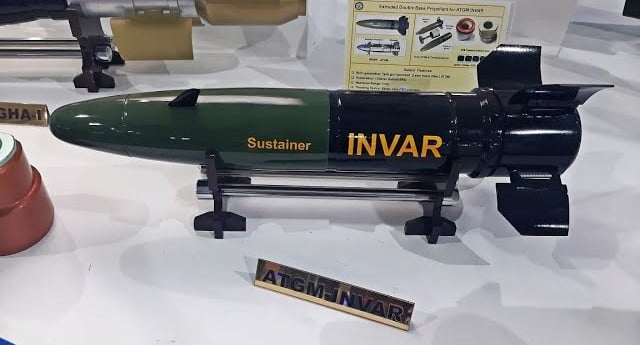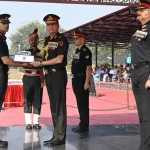The Ministry of Defence is in the final stages of clearing a significant acquisition proposal worth Rs 2,000–3,000 crore for INVAR anti-tank guided missiles, designed to be fired from India’s T-90 tanks. The deal, once finalized, is expected to strengthen the Indian Army’s offensive capabilities on the modern battlefield.
Official sources stated that while Defence Minister Rajnath Singh has the authority to approve defence deals up to Rs 2,000 crore, any proposal exceeding that threshold will require clearance from the Cabinet Committee on Security (CCS), headed by Prime Minister Narendra Modi. If approved, the deal will result in a major enhancement to the Indian Army’s mechanized warfare capabilities.
The INVAR missile system is known for its high accuracy, tandem warhead, and compatibility with T-90 main battle tanks, which form the backbone of India’s armoured corps. It provides the ability to defeat explosive reactive armour and engage targets at longer ranges, giving Indian tank regiments an operational edge.
In a parallel development aimed at strengthening indigenous defence production, the Ministry of Defence has approved the execution model for the Advanced Medium Combat Aircraft (AMCA) programme—India’s next-generation stealth fighter jet project. The Aeronautical Development Agency (ADA) under the Defence Research and Development Organisation (DRDO) will lead the programme in collaboration with both public and private Indian defence firms.
The AMCA is envisioned as a medium-weight, stealth-capable fighter jet designed for deep-penetration and high-end air combat missions. The initial development phase of the project has been estimated at Rs 15,000 crore. The execution model allows Indian companies—either individually, as joint ventures, or consortia—to participate, promoting equal opportunity within the domestic aerospace ecosystem.
The CCS had given in-principle approval to the AMCA project last year. The initiative represents a major step forward in India’s goal of achieving self-reliance in critical defence technologies and follows the successful development of the Light Combat Aircraft (LCA) Tejas.
These dual developments—in the missile and aerospace domains—underscore the government’s focus on modernising India’s military while also nurturing indigenous capability in high-end defence production.













